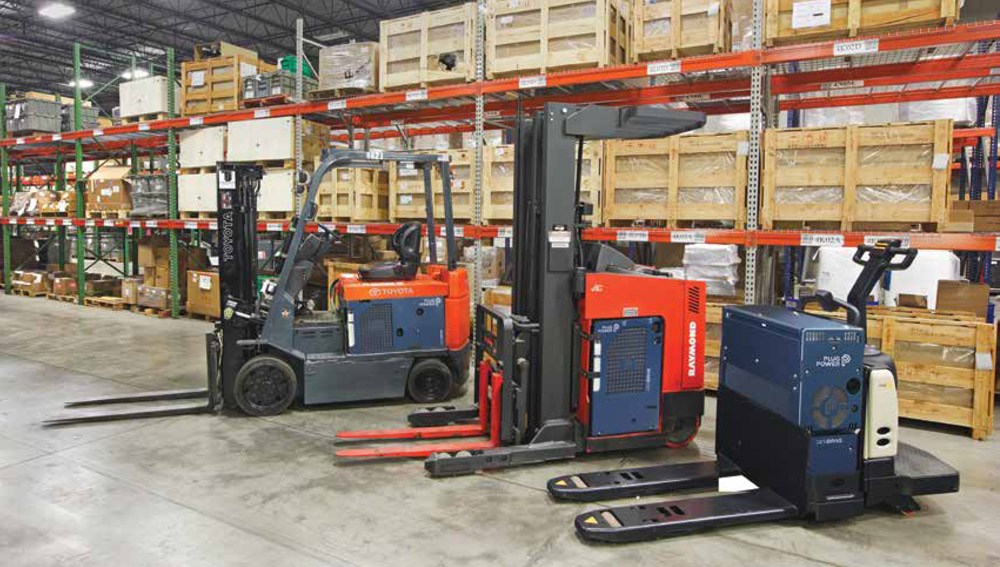
The race to make hydrogen the world’s transportation and industrial fuel in order to reduce carbon dioxide emissions is well underway, judging from the turnout of a global hydrogen conference last week.
Nearly 5,000 people joined an interactive 24-hour virtual global hydrogen conference that began on the evening of Oct. 7 and continued non-stop through late afternoon Oct. 8. In addition to hydrogen, fuel cell development was discussed extensively — for heavy trucking, portable generation and automobiles.
One of the boldest plans unveiled was a pending deal between Australia and Germany to use Australia’s enormous amount of solar power potential to produce hydrogen either from desalinated sea water or fresh water, convert it to ammonia, and then ship it by tanker to Germany through the Port of Rotterdam in the Netherlands.
The two countries have already established a feasibility study to look at the supply chain for delivering large quantities of green hydrogen from Australia to Germany, Philip Green, Australia’s ambassador to Germany, told listeners.
“We call our ambition, ‘shipping the sunshine,’ taking the very large quantities of Australian sunshine, making them available in terms of hydrogen to support the next phase of Germany’s climate change ambitions.
“If you took just 3% of Australia’s land area, and if you only use its solar energy to produce green hydrogen, that would of itself provide more than 10 times Germany’s annual needs for green hydrogen. So the fundamental equation there is that Australia has the capacity to be a big supplier of green hydrogen to Germany, and others,” he said.
Another Australian, Geoff Ward, CEO of the Hazer Group, told the audience that his company is working to commercialize a process that converts methane — in this case biogas produced at wastewater treatment plants — into hydrogen and graphite, a solid form of carbon. In other words, no carbon dioxide would be emitted in the production of the hydrogen.
The technology was developed at the University of Western Australia and is technically known as methane pyrolysis, using high temperatures in the absence of oxygen and in the presence of a catalyst (in this case powdered iron ore) to break the methane into hydrogen and graphite.
Ward said the process uses about the same amount of energy needed in steam reforming to crack methane into hydrogen and carbon dioxide, but much less energy than what is required for the electrolysis of water. Hazer began pilots in 2017, operating different configurations of project reactors in the company’s preferred “pressurized fluidized bed format.”
“We think this is a really important emerging tool in creating the hydrogen economy. It has a range of potential applications, from very large applications based on natural gas supporting industries like ammonia and petrochemicals, or decarbonization of large-scale gas systems. The other application we see is embedding it with city infrastructure with wastewater treatment plants, or with landfill gas, where we see a strong example of a circular economy,” Ward said.
The company has partnered with a municipal wastewater plant and is now building an adjacent $22 million pyrolysis plant.
‘Missing Link’
Chile is another nation distant from Europe but also interested in supplying hydrogen created with water and low-cost renewable energy. Juan Carlos Jobet, the country’s energy minister, made an effort to bring the point of the very technical conference into perspective.
“I’m convinced that our most important responsibility with future generations is reducing CO2 emissions as fast as we can. This is … the most complex, most important intergenerational fairness issue we’re dealing with.
“Any decisions we make or we don’t make, any efforts we undertake, will impact future generations, our children and grandchildren. So it’s our responsibility to stop this problem as quickly as we can. And if you look at what is generating the emissions that produce climate change, this is very, very clear.”
Green hydrogen is the “missing link” in carbon neutrality plans, Jobet said.
“And this is true all over the world. That’s the reason why the green hydrogen economy is building momentum all over the world,” he said.
Relying on a series of global hydrogen reports from McKinsey and Co., Jobet said Chile in March released a plan proposing to build extensive solar and wind installations and produce some green hydrogen for use at home, but convert most of the output to ammonia and ship it abroad as a source of green energy.
German firms will build the equipment, he said, and the Chilean government hopes to negotiate contracts with customers in the U.S., Japan and other Asian nations.
Long-haul Trucking Opportunity
Fuel cell development and green hydrogen came together during the 24-hour marathon in the remarks of Sanjay Shrestha, energy solutions and chief strategy officer of Plug Power, the U.S. fuel cell maker based in Latham, N.Y.
Founded in 1997 as a joint venture, the company has been a manufacturer of fuel cells, particularly for warehouse forklift trucks. But since its acquisition of an electrolyzer company last year and announcements that it will build additional plants, Plug Power’s redefined mission now includes producing green hydrogen, relying on the same technology in its fuel cells. And Plug Power is seeking partners globally as it expands.

Speaking to those ambitions, Shrestha put it this way: “We have a very strong balance sheet … to execute on a lot of the global strategic initiatives that we have in place. So that we really go from a company that created a first viable commercial market for hydrogen fuel cell industry in forklifts to becoming a global green hydrogen solutions company.”
He said the company’s plans are to have as much as 500 tons of green hydrogen production capacity by 2025 in North America alone. It is also looking to partner with companies in Spain and Portugal.
And the company is planning to build fuel cells capable of powering vehicles. Plug Power has signed a 50-50 partnership with Renault, Shrestha said. “We are going to have a light commercial fuel cell electric vehicle for pilot application in Europe before the end of the year,” he said.
Looking ahead, Shrestha noted that its fuel cells “are very modular in nature.”
“It can … power all the way from robotic application drones and very small fuel cell units to … commercial vehicles to ground support equipment all the way to trains and aerospace as well as long haul trucking.
“And just to take a step back. If we think about the cost-reduction roadmap for green hydrogen, [and] the amount of the diesel that is consumed by long-haul trucking in North America, we really believe there is a tremendous opportunity here for green hydrogen solutions to help decarbonize the transportation industry in a very meaningful manner,” he said.
Sunita Satyapal, U.S. Department of Energy’s director of hydrogen and fuel cell research, was the first of 30 keynote speakers Thursday evening. She explained the Biden administration’s efforts to lower the cost of clean hydrogen to $1/kg within the decade and its support of efforts to manufacture fuel cells for heavy-duty trucking.
The last speaker was Thomas Stephenson, CEO of Pajarito Powder, a manufacturer of the catalysts at the heart of fuel cell technology.
The conference was organized by Mission Hydrogen, GmbH, a small company in southern Germany describing itself at “the independent partner of the worldwide community.” The event had 17 corporate sponsors. Nearly 60 companies hosted interactive exhibits during the conference.
Mission Hydrogen announced it will host a global conference in October 2022.

